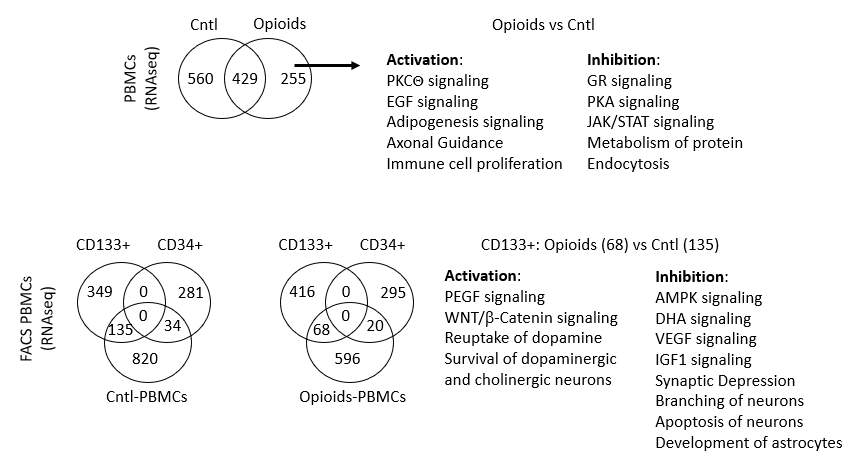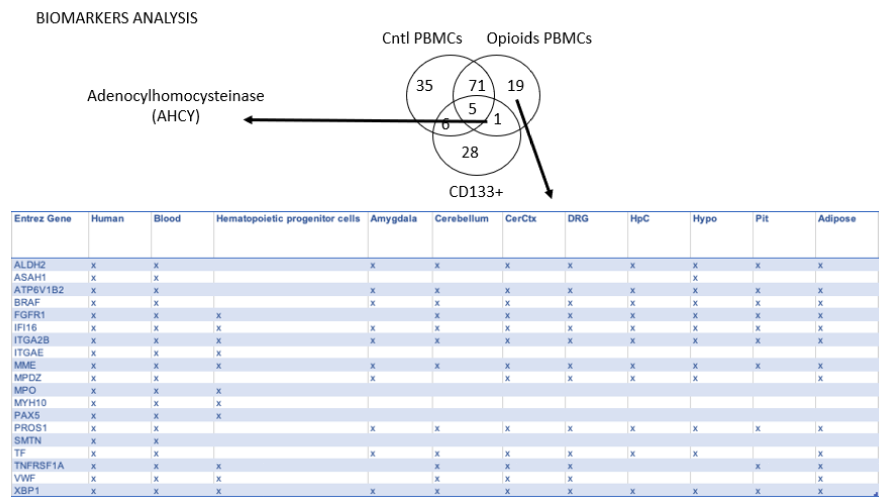Environmental Health
Category: Abstract Submission
Environmental Health I
127 - Maternal opioid exposure during pregnancy alters gene expression associated with neural function in umbilical cord blood cells
Friday, April 22, 2022
6:15 PM - 8:45 PM US MT
Poster Number: 127
Publication Number: 127.108
Publication Number: 127.108
Shirelle X. Liu, University of Minnesota Medical School, Minneapolis, MN, United States; Ashajyothi Mooganayakanakote Siddappa, Hennepin Healthcare/University of Minnesota, Minnneapolis, MN, United States; Andrew Harris, Hennepin Healthcare Research Institute, Minneapolis, MN, United States; Phu Tran, University of Minnesota Masonic Children's Hospital, Minneapolis, MN, United States

Shirelle X. Liu, BS
Graduate student
University of Minnesota Medical School
Minneapolis, Minnesota, United States
Presenting Author(s)
Background: The opioid epidemic is a national health crisis and pregnant mothers affected with opioid use/abuse pose risks to fetus. Infants born to mothers who use either prescription or non-prescription opioids during pregnancy with sudden abruption of opioid delivery after birth develop neonatal opioid withdrawal syndrome (NOWS). These infants are at high risk for long-term cognitive dysfunction and psychiatric disorders. Despite the strong association between NOWS and later-life adverse neurological consequences, the underlying mechanisms for these effects remain unclear.
Objective: Investigate gene expression changes in umbilical cord blood peripheral blood mononuclear cells (PBMCs) induced by maternal opioid exposure during pregnancy.
Design/Methods: Umbilical cord blood samples were collected at delivery from an opioid-exposed group (n = 3) and a non-opioid-exposed (n = 3) control group. PBMCs were isolated from each sample. Isolated PBMCs from one of the control samples were sorted with hemopoietic stem cell marker CD133+ or CD34+ using flow cytometry. RNA-seq was performed with each sample and genes with raw reads greater than 500 were used for annotations and comparisons using Ingenuity Pathway Analysis (IPA).
Results: RNA-seq revealed 255 genes uniquely expressed in the opioid-exposed group compared to the control group. IPA mapped opioid group-specific genes to activation of cell signaling, proliferation and axonal guidance pathways as well as inhibition of glucocorticoid receptor signaling, protein metabolism and endocytosis. Compared to CD133+ control group, activation of dopamine-related signaling pathway and inhibition of neural plasticity pathways were uncovered in the opioid group. Biomarker analysis showed molecules specific to the opioid group involved in alcohol metabolism (ALDH2), brain development (MPDZ), and psychiatric disorders (XBP1).Conclusion(s): Maternal opioid exposure during pregnancy induces gene expression changes in the umbilical cord blood PBMCs, including CD133+ cells associated with neural development, which may indicate underlying epigenetic changes accounting for long-term neurodevelopmental abnormality related to prenatal opioid-exposure. This study provides preliminary groundwork for further characterization of mechanisms mediating the long-term adverse consequences of NOWS.
Figure 1 Up-/Down-regulated pathways in opioid-exposed group compared to control group.
Up-/Down-regulated pathways in opioid-exposed group compared to control group.
Figure 2 Biomarker analysis on genes specific to opioid-exposed group.
Biomarker analysis on genes specific to opioid-exposed group.
Objective: Investigate gene expression changes in umbilical cord blood peripheral blood mononuclear cells (PBMCs) induced by maternal opioid exposure during pregnancy.
Design/Methods: Umbilical cord blood samples were collected at delivery from an opioid-exposed group (n = 3) and a non-opioid-exposed (n = 3) control group. PBMCs were isolated from each sample. Isolated PBMCs from one of the control samples were sorted with hemopoietic stem cell marker CD133+ or CD34+ using flow cytometry. RNA-seq was performed with each sample and genes with raw reads greater than 500 were used for annotations and comparisons using Ingenuity Pathway Analysis (IPA).
Results: RNA-seq revealed 255 genes uniquely expressed in the opioid-exposed group compared to the control group. IPA mapped opioid group-specific genes to activation of cell signaling, proliferation and axonal guidance pathways as well as inhibition of glucocorticoid receptor signaling, protein metabolism and endocytosis. Compared to CD133+ control group, activation of dopamine-related signaling pathway and inhibition of neural plasticity pathways were uncovered in the opioid group. Biomarker analysis showed molecules specific to the opioid group involved in alcohol metabolism (ALDH2), brain development (MPDZ), and psychiatric disorders (XBP1).Conclusion(s): Maternal opioid exposure during pregnancy induces gene expression changes in the umbilical cord blood PBMCs, including CD133+ cells associated with neural development, which may indicate underlying epigenetic changes accounting for long-term neurodevelopmental abnormality related to prenatal opioid-exposure. This study provides preliminary groundwork for further characterization of mechanisms mediating the long-term adverse consequences of NOWS.
Figure 1
 Up-/Down-regulated pathways in opioid-exposed group compared to control group.
Up-/Down-regulated pathways in opioid-exposed group compared to control group.Figure 2
 Biomarker analysis on genes specific to opioid-exposed group.
Biomarker analysis on genes specific to opioid-exposed group.